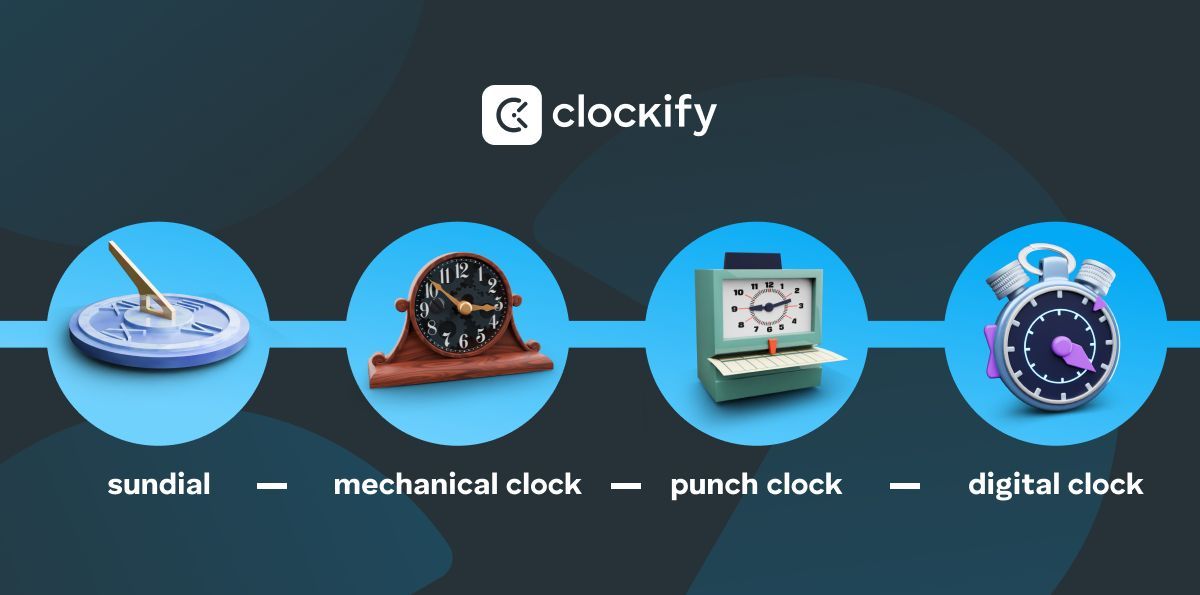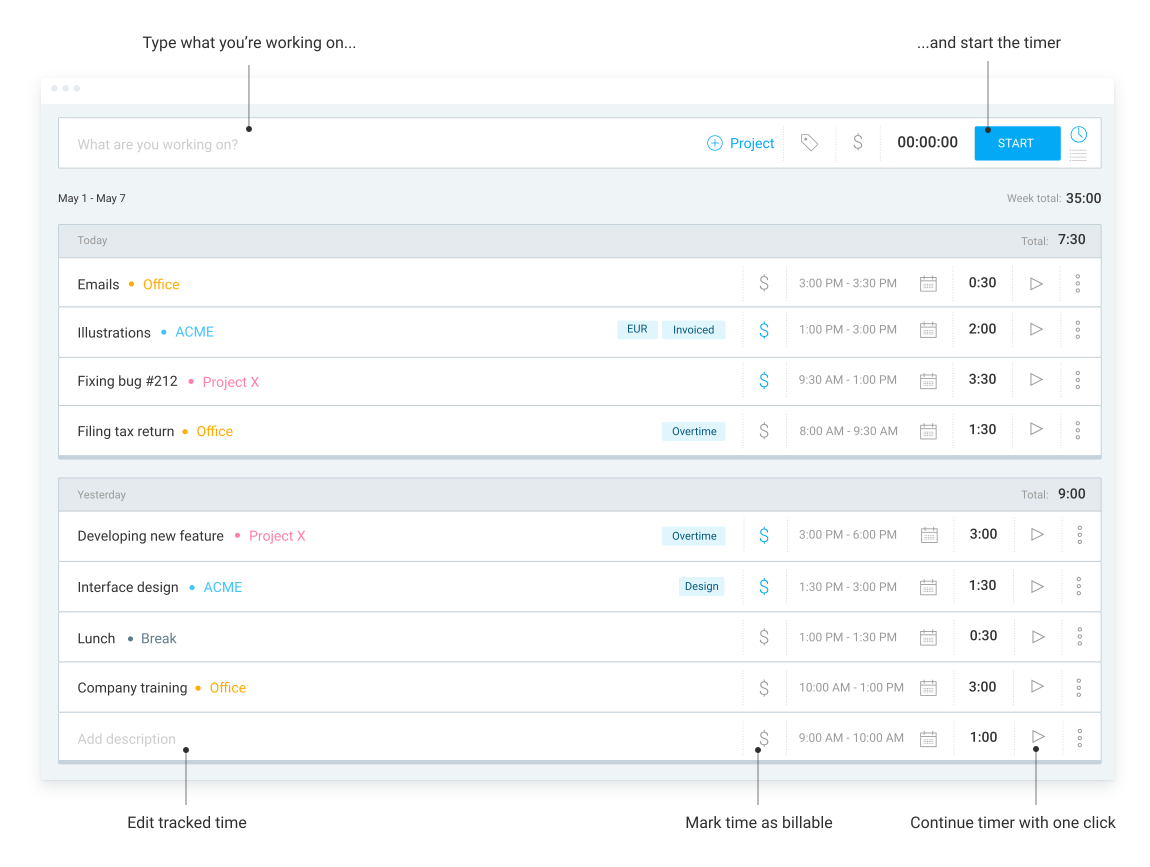Have you ever stopped to think why we track time at all when your employees clock in for a day’s work?
As workers track time, their workday is officially recognized, protecting their rights and ensuring they are paid for every minute they work — which helps make your company compliant with labor laws.
This simple act also makes you a part of a history of people and innovations that have revolutionized how we value time at work.
Now, it took a while for laws to regulate employee hours and time tracking — thousands and thousands of years, to be more exact.
You could say that it all started with the sun and stars — because people needed to tell time long before they actually used this practice for business purposes.
Join us as we uncover the evolution and key role of time tracking in your daily work life — and how time tracking labor laws tie into that.

Table of Contents
1500 BC — Telling time with the sun and stars
Our ancestors first used the movement of the sun and stars to measure the passage of time — the first sundials date back as far as 1500 BC!
Sundials would cast shadows as the sun moved across the sky, from east to west. The shadows marked the hours, creating a simple way to track time.
During the night, early astronomers would observe the regular patterns of the stars to divide the night into segments.
6–13th centuries — The time tracking power of fire and water
In 6th century China, people used fire and smoke — i.e. the length of time necessary for burning an incense stick — to tell time for many daily activities. These were known as incense clocks.
In the 11th century, Chinese inventor Su Sung perfected the water clock — water would slowly drip from the top container to the bottom one, marked with the hours of the day.
13th century — From mechanical to astronomical clocks
The very first mechanical clocks appeared in the 13th century. They were revolutionary at the time!
Soon after, in the 14th century, the brilliant mathematician and astronomer Richard of Wallingford crafted the first astronomical mechanical clock. The clock showed the current positions of the Sun, Moon, and visible stars, as well as the lunar phases.
However, time tracking for business purposes became the practice we know today only in the 19th century, when the punch clock entered the scene.
19th century — Punch clock revolutionizes workforce time tracking
The punch clock was invented by Willard Legrand Bundy, a New York jeweler, in 1888. The device was simple but ingenious in its ability to have workers ‘punch’ in and out, thus recording their hours on a paper card.
This marked the beginning of recorded work hours, connecting time to labor in a tangible way. After all, many people started moving to cities to work in factories during the Industrial Age. This influx of new workers meant more efficient work schedules and labor management were also needed.
The introduction of punch clocks perfectly met this demand. Factories needed a foolproof way to get employees to work the hours they were paid for, and employees wanted assurance that they would be paid fairly for their time.
This evolution created a framework for the modern workplace, setting the stage for future labor rights and management practices.
Let’s explore that next.
💡 Clockify Pro Tip
Examine your life in numbers and discover how much time you spend on various daily activities, from eating and sleeping to answering emails:

20th century — The groundbreaking FLSA and accurate timekeeping
Over the years, labor laws have dramatically transformed the landscape of work.
One of the most pivotal pieces of legislation in the United States was established in 1938 — the Fair Labor Standards Act (FLSA).
This piece of regulation presented a game changer for American workers and employers. Essentially, it fine-tuned different aspects of work, such as:
- Minimum wage,
- Overtime pay, and
- Child labor protection.
Most importantly, accurate time tracking wasn’t just a good practice anymore — the FLSA made it a legal necessity.
Employers were required to keep precise records of hours worked to ensure workers were paid accordingly, especially if they worked overtime. This fostered the concept of valuing everyone’s time equally.
In fact, the FLSA illustrated how deeply interconnected labor laws and time tracking are.
But that’s not the end of it.
Let’s move on to the best kind of time tracking methods — modern-day digital tech.
💡 Clockify Pro Tip
Check out some of the best time tracking apps that also provide you with detailed data you can further use for better payroll, accounting, productivity, and more:
21st century — Stay legally savvy with modern time tracking tools
In the early 2000s, digital tools replaced punch cards and paper timesheets to include web-based timesheets and complex automated systems.
In short, these advancements allow you to:
- Record time at work in a couple of clicks,
- Analyze time spent on projects, and
- Use this data for better productivity and time management.
So, employers can now easily stay compliant — as well as save time on administrative tasks and focus on growing their businesses instead.
By following time tracking labor laws, companies avoid legal disputes and hefty fines. Penalties for non-compliance can be severe for employers — not to mention the reputational damage.
For employers looking to navigate business waters smoothly, modern time tracking tools offer a lifeline.
This brings us to Clockify, a modern and powerful solution that lets you tackle complexities of time tracking while ensuring full compliance with laws and regulations.
Clockify does more than count hours — it makes time tracking a breeze because it’s so easy to use.

As a powerful tool, Clockify removes the burden of manual tracking and minimizes the risk of errors. With more than 80 integrations, Clockify tracks your time from anywhere on the web.
In fact, Clockify ensures that staying in line with laws and regulations is straightforward and stress-free — for a very reasonable price.
Let Clockify take care of time tracking, so you can focus on what really matters — running your business.



